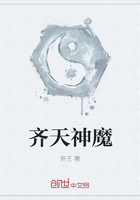In his career as governor Cleveland displayed the same stanch characteristics as before, and he was fearless and aggressive in maintaining his principles.The most striking characteristic of his veto messages is the utter absence of partisan or personal designs.Some of the bills he vetoed purported to benefit labor interests, and politicians are usually fearful of any appearance of opposition to such interests: His veto of the bill establishing a five cent fare for the New York elevated railways was an action of a kind to make him a target for calumny and misrepresentation.Examination of the record reveals no instance in which Cleveland flinched from doing his duty or faltered in the full performance of it.He acted throughout in his avowed capacity of a public trustee, and he conducted the office of governor with the same laborious fidelity which he had displayed as sheriff and as mayor.And now, as before, he antagonized elements of his own party who sought only the opportunities of office and cared little for its responsibilities.He did not unite suavity of manner with vigor of action, and at times he allowed himself to reflect upon the motives of opponents and to use language that was personally offensive.He told the Legislature in one veto message that "of all the defective and shabby legislation which has been presented to me, this is the worst and most inexcusable." He once sent a scolding message to the State Senate, in which he said that "the money of the State is apparently expended with no regard to economy," and that "barefaced jobbery has been permitted." The Senate having refused to confirm a certain appointee, he declared that the opposition had "its rise in an overwhelming greed for the patronage which may attach to the place," and that the practical effect of such opposition was to perpetuate "the practice of unblushing peculation." What he said was quite true and it was the kind of truth that hurt.The brusqueness of his official style and the censoriousness of his language infused even more personal bitterness into the opposition which developed within his own party than in that felt in the ranks of the opposing party.At the same time, these traits delighted a growing body of reformers hostile to both the regular parties.These "Mugwumps," as they were called, were as a class so addicted to personal invective that it was said of them with as much truth as wit that they brought malice into politics without even the excuse of partisanship.But it was probably the enthusiastic support of this class which turned the scale in New York in the presidential election of 1884.
In the national conventions of that year, there was an unusually small amount of factional strife.In the Republican convention, President Arthur was a candidate, but party sentiment was so strong for Blaine that he led Arthur on the first ballot and was nominated on the fourth by a large majority.In the Democratic convention, Cleveland was nominated on the second ballot.
Meanwhile, his opponents had organized a new party from which more was expected than it actually accomplished.It assumed the title Anti-Monopoly and chose the notorious demagogue, General Benjamin F.Butler, as its candidate for President.
During this campaign, the satirical cartoon attained a power and an effectiveness difficult to realize now that it has become an ordinary feature of journalism, equally available for any school of opinion.But it so happened that the rise of Cleveland in politics coincided with the artistic career of Joseph Keppler, who came to this country from Vienna and who for some years supported himself chiefly as an actor in Western theatrical companies.He had studied drawing in Vienna and had contributed cartoons to periodicals in that city.After some unsuccessful ventures in illustrated journalism, he started a pictorial weekly in New York in 1875.It was originally printed in German, but in less than a year it was issued also in English.It was not until 1879 that it sprang into general notice through Keppler's success in reproducing lithographed designs in color.Meanwhile, the artist was feeling his way from the old style caricature, crowded with figures with overhead loops of explanatory text, to designs possessing an artistic unity expressive of an idea plain enough to tell its own story.He had matured both his mechanical resources and his artistic method by the time the campaign of 1884 came on, and he had founded a school which could apply the style to American politics with aptness superior to his own.It was Bernhard Gillam, who, working in the new Keppler style, produced a series of cartoons whose tremendous impressiveness was universally recognized.Blaine was depicted as the tattooed man and was exhibited in that character in all sorts of telling situations.While on the stump during the campaign, Blaine had sometimes literally to wade through campaign documents assailing his personal integrity, and phrases culled from them were chanted in public processions.One of the features of a great parade of business men of New York was a periodical chorus of "Burn this letter," suiting the action to the word and thus ****** a striking pyrotechnic display.* But the cartoons reached people who would never have been touched by campaign documents or by campaign processions.
* The allusion was to the Mulligan letters, which had been made public by Mr.Blaine himself when it had been charged that they contained evidence of corrupt business dealings.The disclosure bad been made four years before and ample opportunity had existed for instituting proceedings if the case warranted it, but nothing was done except to nurse the scandal for campaign use.















